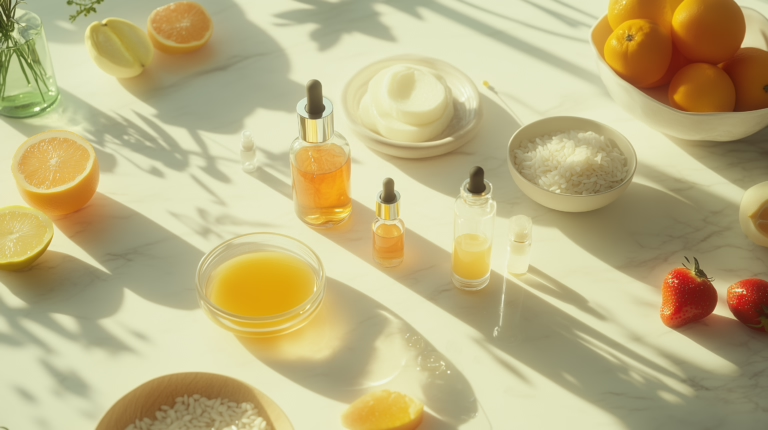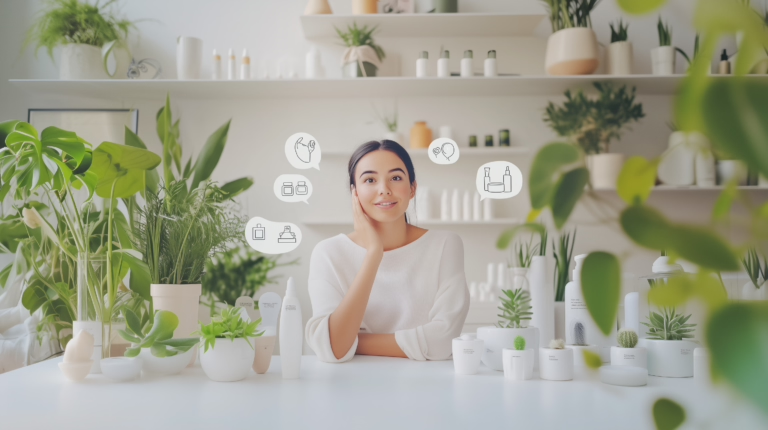Refillable Beauty: Is It the Future?
Why the Refill Hype Matters Now
Every year, billions of cosmetic and personal-care bottles—shampoos, lotions, serums—are discarded across India, ending up in landfills or incinerators. These containers contribute significantly to pollution and microplastics in our water supply. If you’ve ever hesitated while tossing an empty conditioner bottle, wondering if there’s a more eco-friendly way, you’re not alone. That’s exactly what the refillable beauty movement offers: the same trusted products, minus the wasteful packaging.
In this blog post, we explore why refills are gaining momentum in India, how various refill systems work, whether they truly reduce waste and save money, and how you can easily get started—even if you live outside a metro city. By the end, you’ll have the insights you need to decide whether refillable beauty is a passing trend or the future of sustainable self-care in India.

Why India Is Suddenly Talking About Refills
Influencer Buzz & Social Proof
A quick scroll through Instagram Reels or YouTube Shorts reveals a growing trend: beauty influencers enthusiastically showcasing their refill routines with sleek, reusable containers. Their enthusiasm is contagious, often sparking a flurry of comments like “Where can I get one?” This influencer-driven momentum is encouraging brands to set up refill stations in Delhi cafés, Mumbai salons, and Bangalore co-working spaces.
New EPR Rules Drive Change
India’s Central Pollution Control Board updated its Extended Producer Responsibility (EPR) regulations in 2022, requiring brands to take responsibility for post-consumer plastic. Companies must now collect and recycle as much plastic packaging as they generate. Refills help brands meet these targets more affordably, so you’re likely to see more refill-friendly formats on store shelves.
Gen Z and Millennial Eco-Awareness
India’s youth—particularly Gen Z—are leading the charge toward sustainability. Many are willing to pay a bit more for products in eco-friendly, refillable formats, and they proudly share their “eco hauls” online. According to a Nielsen survey, 73% of Indian youth are open to switching to sustainable alternatives if the performance remains the same.
Expanding Reach Beyond Metros
What started in Tier 1 cities has now spread to Tier 2 and Tier 3 towns, thanks to direct-to-consumer (D2C) startups offering pan-India cartridge delivery services. WhatsApp groups and local language blogs are helping spread awareness, making refills accessible even outside urban hubs.
How Refillable Beauty Systems Work

Refillable beauty generally falls into three categories. Each system offers unique benefits and drawbacks, so you can choose the one that best suits your lifestyle.
In-Store Pump Stations
Here, you bring your empty bottle to a partner location, such as a salon or café. Place the bottle under a dispenser, pull the lever, and refill your product. It’s quick, plastic-free, and satisfying. However, not everyone lives near a refill station, and cleanliness can be a concern if dispensers aren’t properly maintained.
Cartridge and Pod Systems
These systems work like printer ink: you buy concentrated pods or cartridges—often much lighter and compact—that you mix with water in a reusable bottle. They’re easier to ship and use up to 90% less plastic. The downside? They require an initial device purchase and come with a learning curve.
Return-and-Reuse Models
Some brands provide durable bottles for a small deposit. Once empty, you return them via pickup or drop-off points. The brand then sanitizes, refills, and sends them back. This system is convenient and hygienic but might involve a delay and deposit management.
Do Refills Really Reduce Waste and Save Money?

Plastic Footprint Reduction
A typical 250 ml shampoo bottle uses about 15 grams of plastic. If you refill it ten times using 3-gram pods, you save 120 grams of plastic—enough to pack a mid-size lunchbox. Over a year, refilling twice a month could save nearly 3 kg of plastic—the equivalent of lining a cricket pitch.
Lower Carbon Emissions
Each empty plastic bottle generates around 0.2 kg of CO₂ during production. Ten refills reduce that figure to just 0.02 kg per use, saving 1.8 kg of CO₂. Over a year, your refill habit could offset the same emissions as two weeks of daily Ola cab rides.
Cost Savings
While the initial setup (reusable bottle and device) may cost ₹500–₹800, the ongoing refill pods cost only ₹50–₹80 compared to ₹150 for a new bottle. That’s a saving of about ₹70 per month—or ₹840 annually. Add loyalty points and discounts, and you could save over ₹1,200 a year—enough for that spa day you’ve been putting off.
Challenges to Expect and How to Overcome Them
Concerns About Hygiene
Worried about cleanliness at refill stations? Most reputable refill partners use food-grade sanitation between uses. Still unsure? Carry a mini spray of isopropyl alcohol to disinfect nozzles before refilling.
Limited Access in Smaller Towns
Not every town has a refill kiosk—yet. But D2C services now deliver refill pods directly to your doorstep. Just subscribe, and your refills will arrive like clockwork.
High Upfront Costs
Refill systems can seem expensive initially. But think of it as a long-term investment: a one-time ₹800 cost can save you ₹1,200 a year. Plus, many brands offer incentives like loyalty rewards or “buy two, get one free” deals.
Your 5-Step Plan to Start Refilling

Switching to refillables doesn’t have to be overwhelming. Follow this simple plan:
- Do a Shelf Audit: Take photos of your most-used products and pick two that you can easily switch first.
- Choose Your First Refillables: Start with shampoo and body wash—these generate the most waste and are used frequently.
- Find a Refill Source: Locate your nearest refill station or subscribe to a D2C pod service.
- Clean and Prep: Wash bottles with warm, soapy water, rinse, sanitize the nozzle, and let them air-dry.
- Track Progress: Use a spreadsheet or app to log your refills, plastic saved, and money saved. Celebrate small wins to stay motivated.
Beyond Bottles: Trends Shaping 2030 Beauty

The Future of Refillable Beauty
Refillable beauty is only the beginning. Future trends include:
- Solid Tablets and Concentrates: Products you dissolve in water at home—cutting shipping costs to nearly zero.
- Smart Dispensing Devices: AI-powered systems that mix your ideal formula based on local humidity, pollution, and your skin’s needs.
- Government Mandates: By 2027, some states may require mass-market brands to offer refill options.
- Upcycled Ingredients: Formulas using by-products like rice water or fruit peels to close the loop on sustainability.
These innovations will make sustainable beauty even more convenient and accessible.
Is Refillable Beauty Right for You?

Refillable beauty may not be a silver bullet, but it’s one of the easiest and most impactful sustainability switches you can make. From reducing plastic and emissions to saving money, the benefits are clear. Yes, there’s a slight learning curve and occasional inconvenience, but the environmental and financial payoffs are worth it.
Share Your #LastBottle Moment
Tried your first refill? Share your experience with a photo of your reusable bottle or your local refill station moment. Tag it with #LastBottle and inspire others to join India’s refill revolution—one bottle at a time.







